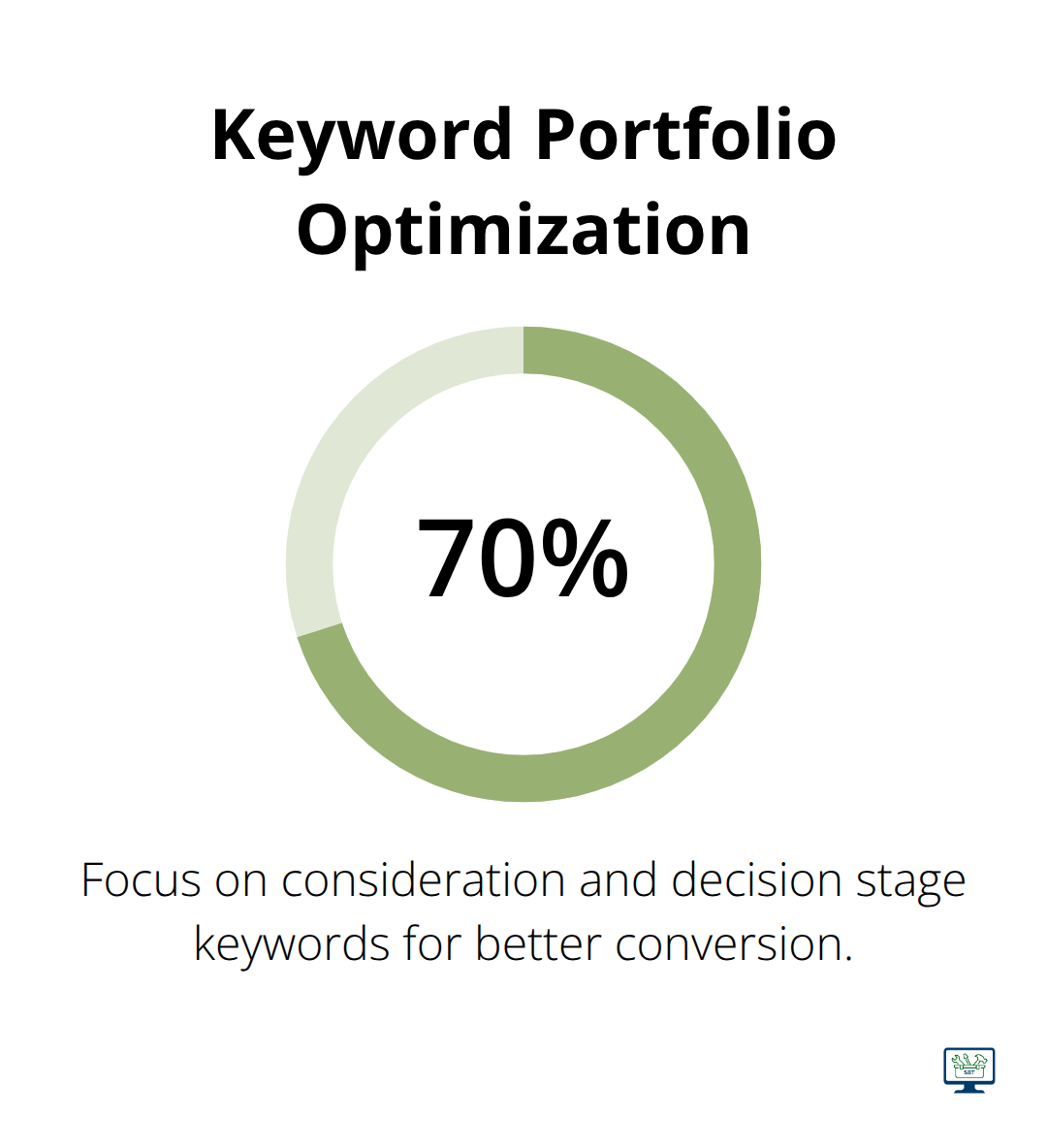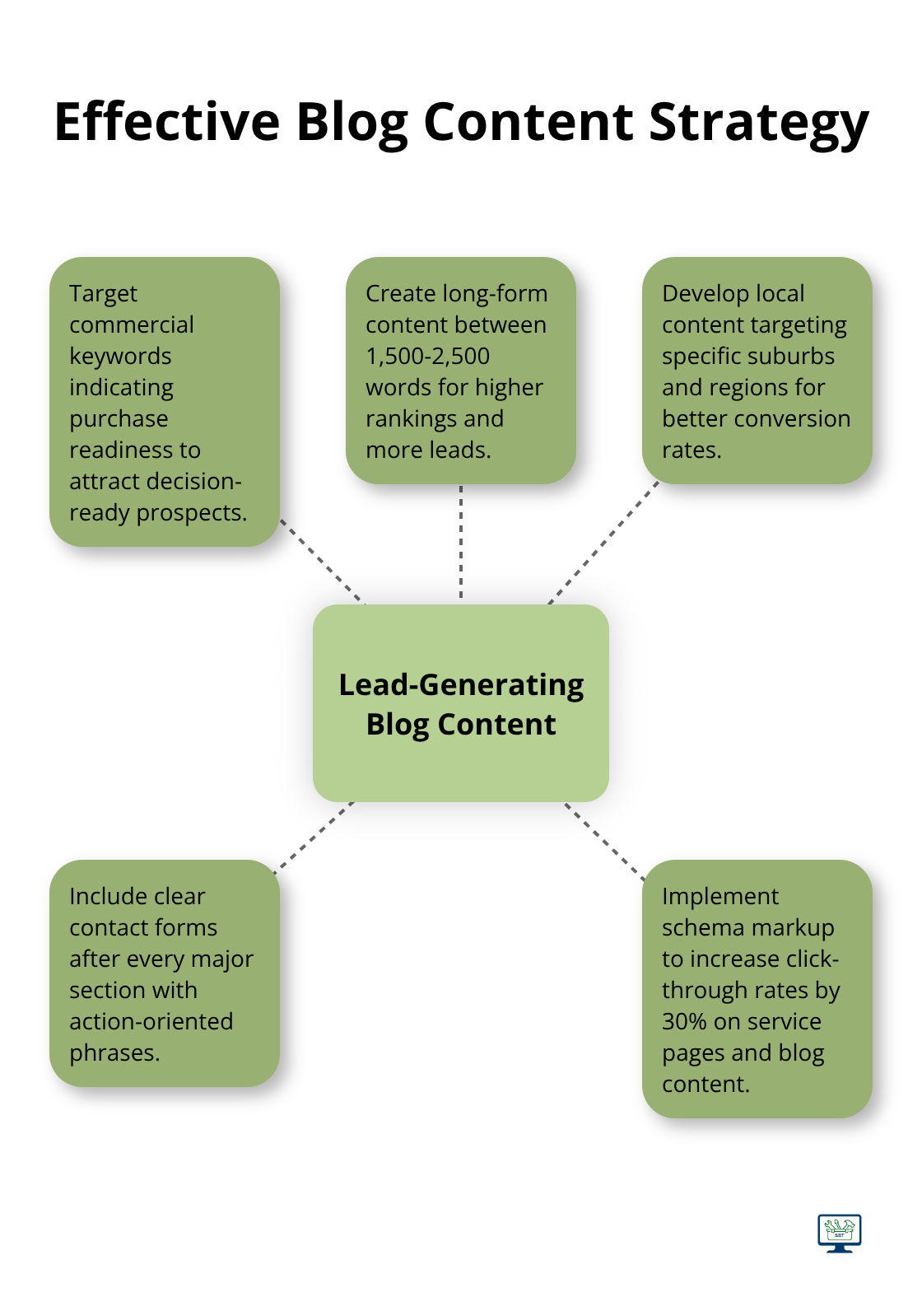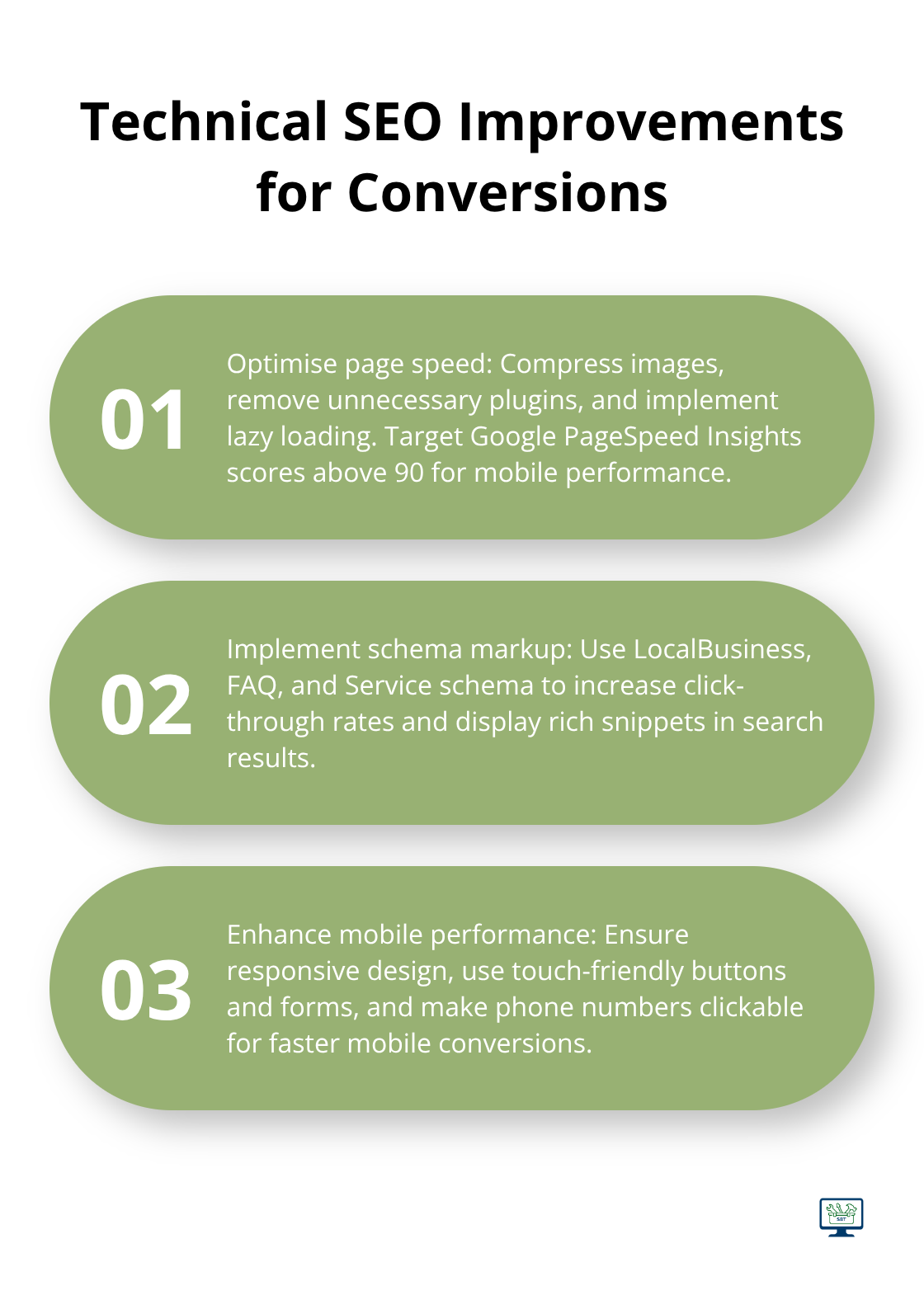How to Boost Lead Generation with SEO Strategies

Published On Sep 24,2025
Small business owners across Australia struggle to generate quality leads through their websites. Traditional marketing methods often drain budgets without delivering measurable results.
SEO and lead generation work hand in hand to attract prospects who are actively searching for your services. We at WebsiteStrategies have seen countless businesses transform their lead flow using strategic SEO approaches that target high-intent customers.
What Makes SEO Generate Quality Leads
Search Intent Drives Lead Quality
Most Australian small business owners waste money on broad keywords that attract unqualified visitors. Search intent determines everything about lead quality. Commercial intent keywords like “plumber near me” or “accounting services Brisbane” show strong purchase signals through phrases like “best,” “near me,” “cost,” or specific service provider names.
The buyer journey has three distinct phases that demand different keyword strategies. Awareness stage searchers use problem-focused terms like “blocked drain solutions.” Consideration stage prospects search for service comparisons like “emergency plumber vs drain cleaning service.” Decision stage buyers use location-specific terms like “24 hour plumber Sunshine Coast.” Target 70% of your keyword portfolio on consideration and decision stage terms because they convert five times better than awareness keywords.

High-Converting Keyword Research Methods
Generic keyword tools miss the commercial intent signals that matter for lead generation. Use Google Ads Keyword Planner to identify keywords with high suggested bid prices above $3 per click. These expensive keywords indicate strong commercial value and purchase intent from searchers. Combine this with AnswerThePublic to find question-based keywords that reveal specific problems your prospects face.
Local SEO strategies transform generic services into lead magnets. Add your service area to every core keyword: “electrician” becomes “electrician Gold Coast” or “emergency electrician Brisbane northside.” Google My Business Insights shows 46% of searches have local intent, making geographic keywords essential for Australian small businesses. Analyse competitor rankings with SEMrush or Ahrefs to identify gaps where you can outrank established players with better content that targets specific suburbs or regions.
On-Page Lead Capture Optimisation
Your page structure must guide visitors towards conversion actions within seconds of arrival. Place lead capture forms above the fold on every service page with clear value propositions like “Get Free Quote in 24 Hours” or “Book Consultation Today.” Research shows above-the-fold forms are viewed 102% more than content below the fold. Use action-oriented headlines that combine your target keyword with conversion language: “Professional Plumber Brisbane – Same Day Service Guaranteed.”
Meta descriptions function as your sales pitch in search results and directly impact click-through rates. Write compelling 150-character descriptions that include your primary keyword, location, and a clear benefit statement. Pages with optimised meta descriptions see 30% higher click-through rates (according to Backlinko analysis). Internal links between related service pages keep prospects engaged longer and increase the likelihood they’ll contact you before they visit competitor sites.
These foundational elements create the framework for lead generation, but effective marketing strategies take your SEO efforts from basic visibility to active prospect attraction.
Which Content Actually Converts Visitors Into Leads
Lead Magnets That Generate Quality Prospects
Lead magnets that solve specific problems generate more qualified leads than generic newsletters. Australian small businesses waste resources when they create broad content instead of targeted resources that work better. Develop industry-specific guides like “Complete Guide to Pool Safety Compliance in Queensland” for pool companies or “Small Business Tax Deductions Checklist 2025” for accountants. Gate valuable content behind simple forms that request name, email, and phone number only. Complex forms reduce conversions by 50%, so keep lead capture minimal. Position lead magnets prominently on service pages and blog posts with compelling headlines that emphasise immediate value delivery.
Blog Content That Attracts Decision-Ready Prospects
Blog content must target commercial keywords that indicate purchase readiness rather than educational topics that attract browsers. Write service-focused articles like “Emergency Electrician Response Times Brisbane Suburbs” or “Cost Breakdown: Professional vs DIY Roof Repairs Gold Coast” that answer pricing and service questions prospects research before they hire. Long-form content between 1,500-2,500 words ranks higher and generates more leads than short posts. Include specific price ranges, service guarantees, and local case studies within your content. Add clear contact forms after every major section with action phrases like “Get Your Free Assessment” or “Schedule Service Today.”

Local Content That Converts Suburban Prospects
Local content that targets specific suburbs and regions converts better than generic city-wide content. Create suburb-specific service pages that address local regulations, common problems, and community references that build trust with area residents. Write articles like “Plumber Recommendations for Noosa Residents” or “Building Permits Required for Deck Construction in Ipswich” that demonstrate local expertise. Include suburb names in your headlines, meta descriptions, and throughout your content naturally. Local prospects trust businesses that understand their specific area challenges and regulations.
Technical Elements That Support Content Conversion
Schema markup increases click-through rates by 30% when you implement it correctly on service pages and blog content. Use LocalBusiness schema for location-based services and FAQ schema for common customer questions. Page speeds under 3 seconds are non-negotiable because 53% of mobile users abandon slow sites. Compress images, minimise plugins, and use content delivery networks to maintain fast speeds across all devices. Mobile-responsive design affects 60% of searches in Australia, which makes mobile optimisation essential for lead generation success.
These content strategies work best when supported by technical SEO improvements and marketing automation software that remove barriers between your prospects and conversion actions.
What Technical Changes Actually Improve Conversions
Page Speed Optimisation That Stops Prospect Abandonment
Page speed determines whether prospects convert or abandon your site within seconds of arrival. Google research shows that page load time going from 1 second to 3 seconds increases the probability of bounce by 32%. Australian businesses lose qualified leads when their websites load slowly on mobile devices, which handle a significant portion of local searches.
Compress images to under 100KB with tools like TinyPNG, remove unnecessary plugins that slow load times, and implement lazy load for images below the fold. Content delivery networks like Cloudflare reduce load times by 50% for Australian users because they serve content from Sydney or Melbourne servers instead of overseas locations. Test your current speed with Google PageSpeed Insights and target scores above 90 for mobile performance.

Schema Markup That Increases Click-Through Rates
Schema markup increases click-through rates because it displays rich snippets that make your search results stand out. LocalBusiness schema shows your phone number, address, and hours directly in Google searches, which makes it easier for prospects to contact you immediately. FAQ schema displays common questions and answers within search results, captures more real estate and answers prospect concerns before they visit competitor sites.
Service schema highlights specific services, prices, and availability information that helps qualified leads identify you as their solution. Implement schema with Google’s Structured Data Markup Helper, then validate your code with the Rich Results Test tool. Reviews schema displays star ratings in search results, helping businesses with strong ratings stand out in search results.
Mobile Performance That Captures Local Searches
Mobile performance affects conversion rates because mobile devices handle a significant portion of Australian searches. Pages that load slowly on mobile lose prospects to competitors who provide faster experiences. Optimise images for mobile screens, use responsive design that adapts to different screen sizes, and test your site on actual mobile devices rather than desktop simulators.
Touch-friendly buttons and forms reduce friction for mobile users who want to contact you quickly. Make phone numbers clickable, position contact forms prominently, and use large buttons that work with finger taps rather than mouse clicks. Mobile users convert 40% faster when sites load under 2 seconds and provide clear contact options. Use tools like Google Analytics to understand your current website traffic, bounce rates, and conversion patterns to identify specific mobile performance issues affecting your lead generation.
Final Thoughts
SEO and lead generation success requires you to target commercial intent keywords, create valuable lead magnets, and maintain fast page speeds across all devices. Australian small businesses that focus on local search terms, implement proper schema markup, and optimise mobile performance see conversion rates increase by 40% within six months. You must track qualified leads rather than vanity metrics like traffic volume to measure real ROI.
Monitor cost per lead, conversion rates from organic search, and revenue attribution through Google Analytics to understand your true performance. Businesses typically see positive returns within 3-6 months when they implement comprehensive SEO strategies consistently. Focus on metrics that directly correlate with revenue growth rather than surface-level engagement numbers.
Start with keyword research that targets your service area, create suburb-specific content that addresses local problems, and implement technical improvements that reduce page load times. Professional SEO guidance from experienced consultants helps Australian businesses avoid common mistakes and accelerate their lead generation results through proven strategies. The combination of targeted content and technical optimisation creates sustainable growth for small businesses across Australia.
